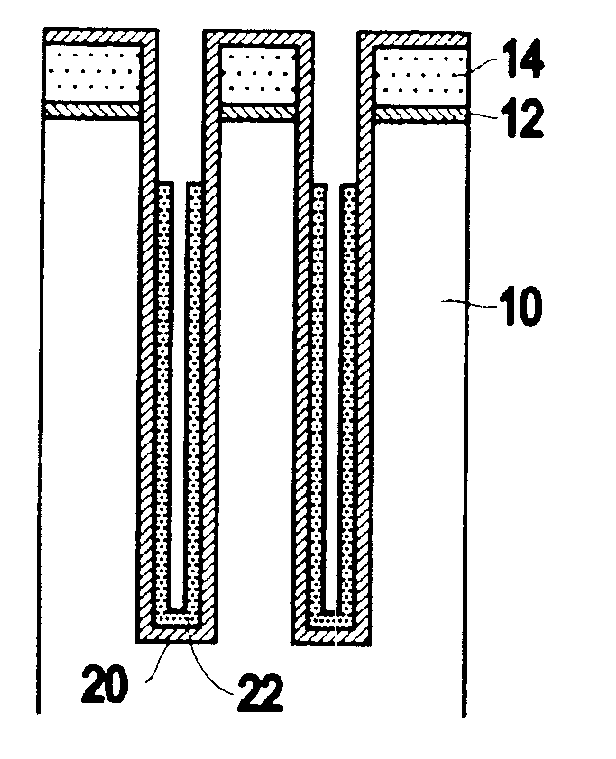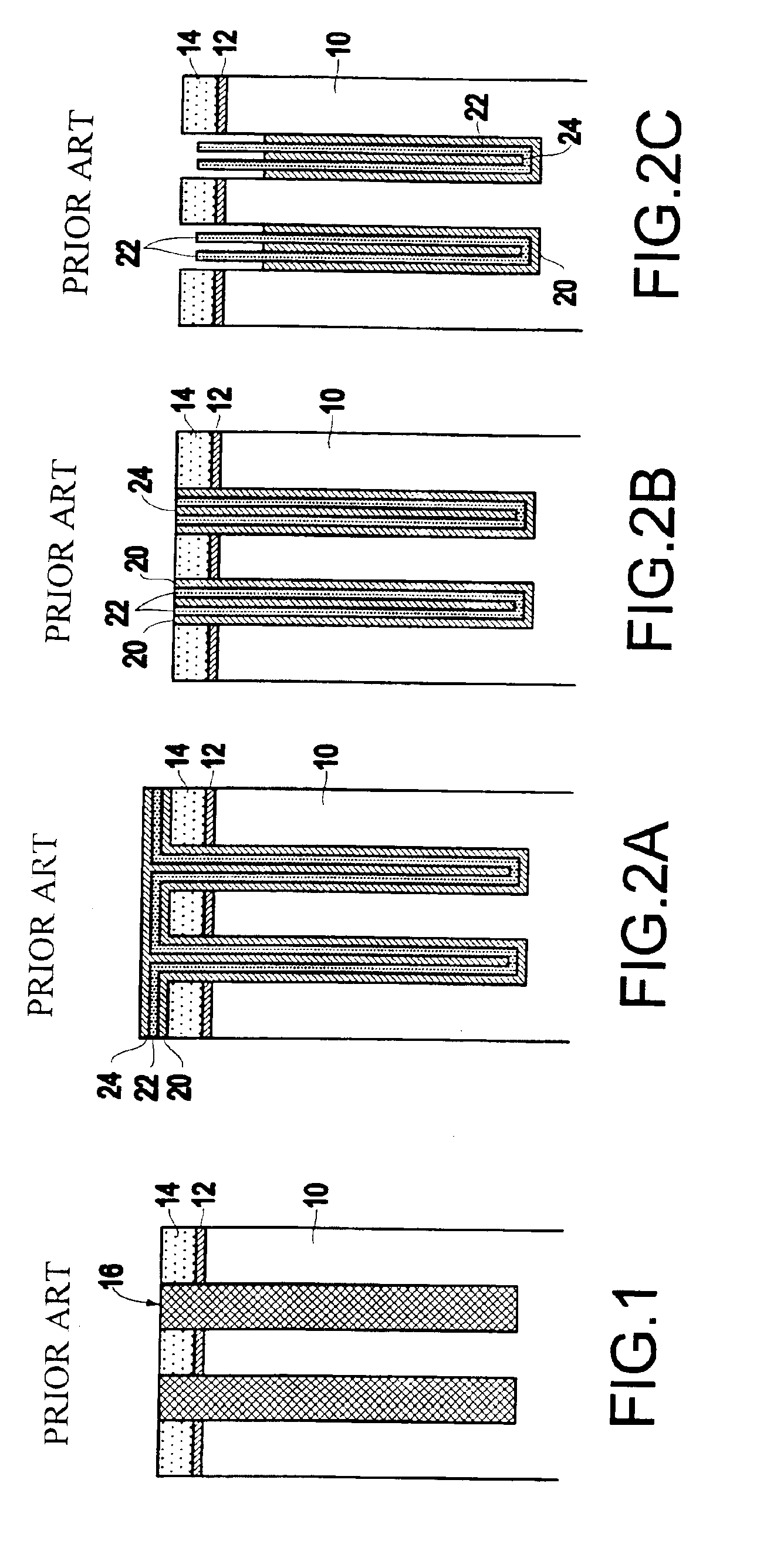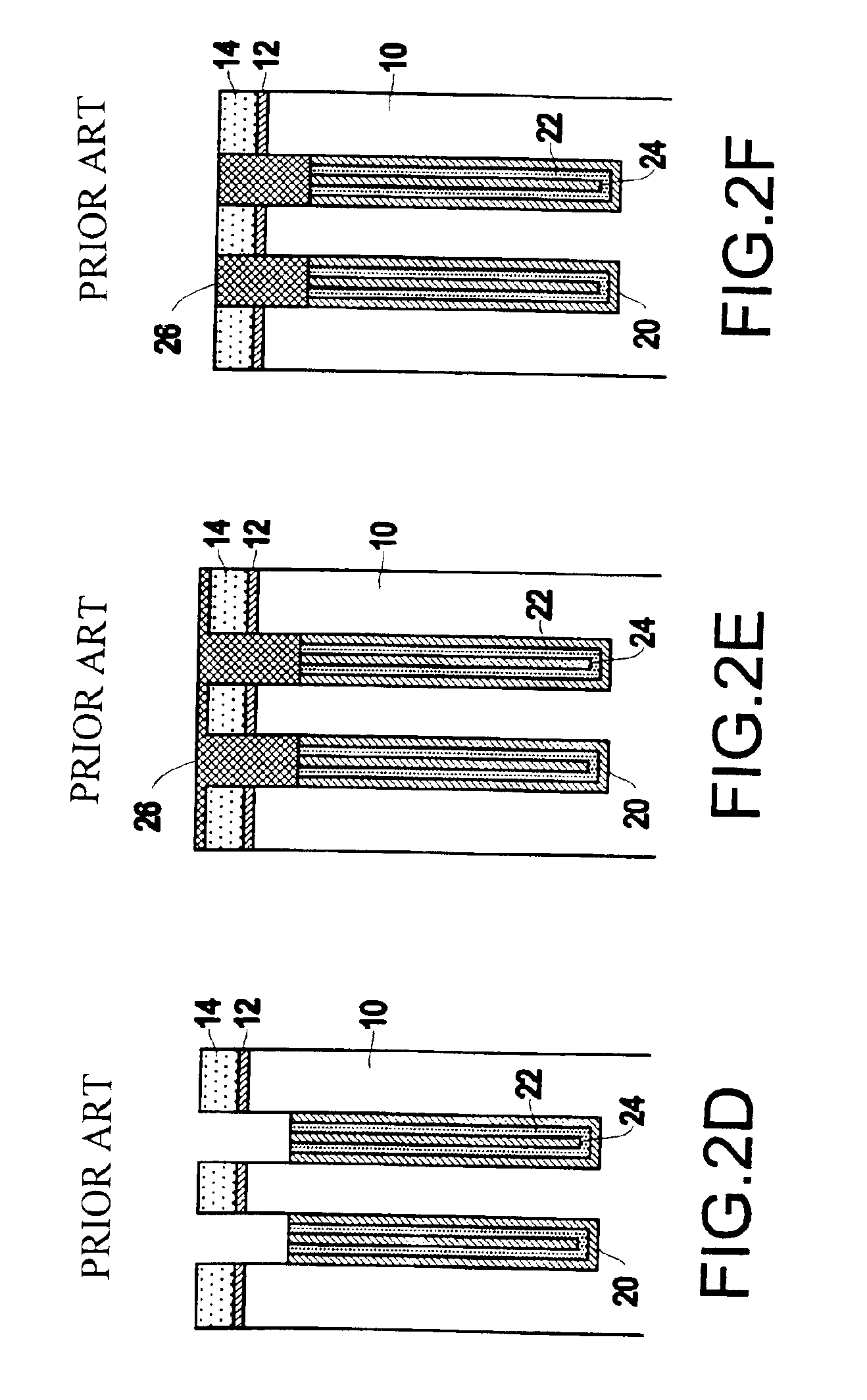Self-limited metal recess for deep trench metal fill
a metal recess and deep trench technology, applied in the direction of basic electric elements, electrical apparatus, semiconductor devices, etc., can solve the problems of reducing the efficiency of etching, so as to achieve enhanced etch rate, reduce the cost of etching, and save a number of manufacturing process steps
- Summary
- Abstract
- Description
- Claims
- Application Information
AI Technical Summary
Benefits of technology
Problems solved by technology
Method used
Image
Examples
Embodiment Construction
[0015]The present invention and the various features and advantageous details thereof are explained more fully with reference to the non-limiting embodiments that are illustrated in the accompanying drawings and detailed in the following description. It should be noted that the features illustrated in the drawings are not necessarily drawn to scale. Descriptions of well-known components and processing techniques are omitted so as to not unnecessarily obscure the present invention.
[0016]The decrease in the opening size of the trench with the concurrent increase in trench depth dramatically increases the aspect ratio (defined as depth / opening size) of the trench, increasing the complexity of the trench patterning process. Moreover, as the aspect ratio of the trench increases, the device speed generally increases concurrently, requiring a faster read / write time.
[0017]FIG. 1 illustrates a deep trench capacitor formed in a substrate 10, such as a single crystal silicon substrate. The tre...
PUM
| Property | Measurement | Unit |
|---|---|---|
| bias power | aaaaa | aaaaa |
| sizes | aaaaa | aaaaa |
| trench depths | aaaaa | aaaaa |
Abstract
Description
Claims
Application Information
 Login to View More
Login to View More - R&D
- Intellectual Property
- Life Sciences
- Materials
- Tech Scout
- Unparalleled Data Quality
- Higher Quality Content
- 60% Fewer Hallucinations
Browse by: Latest US Patents, China's latest patents, Technical Efficacy Thesaurus, Application Domain, Technology Topic, Popular Technical Reports.
© 2025 PatSnap. All rights reserved.Legal|Privacy policy|Modern Slavery Act Transparency Statement|Sitemap|About US| Contact US: help@patsnap.com



